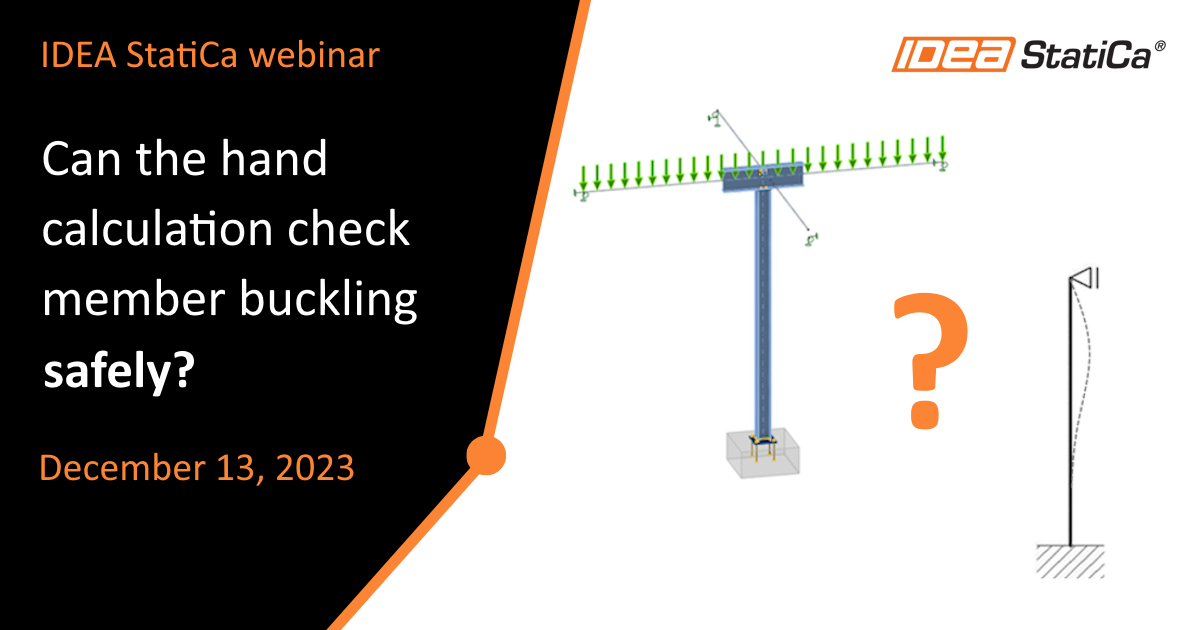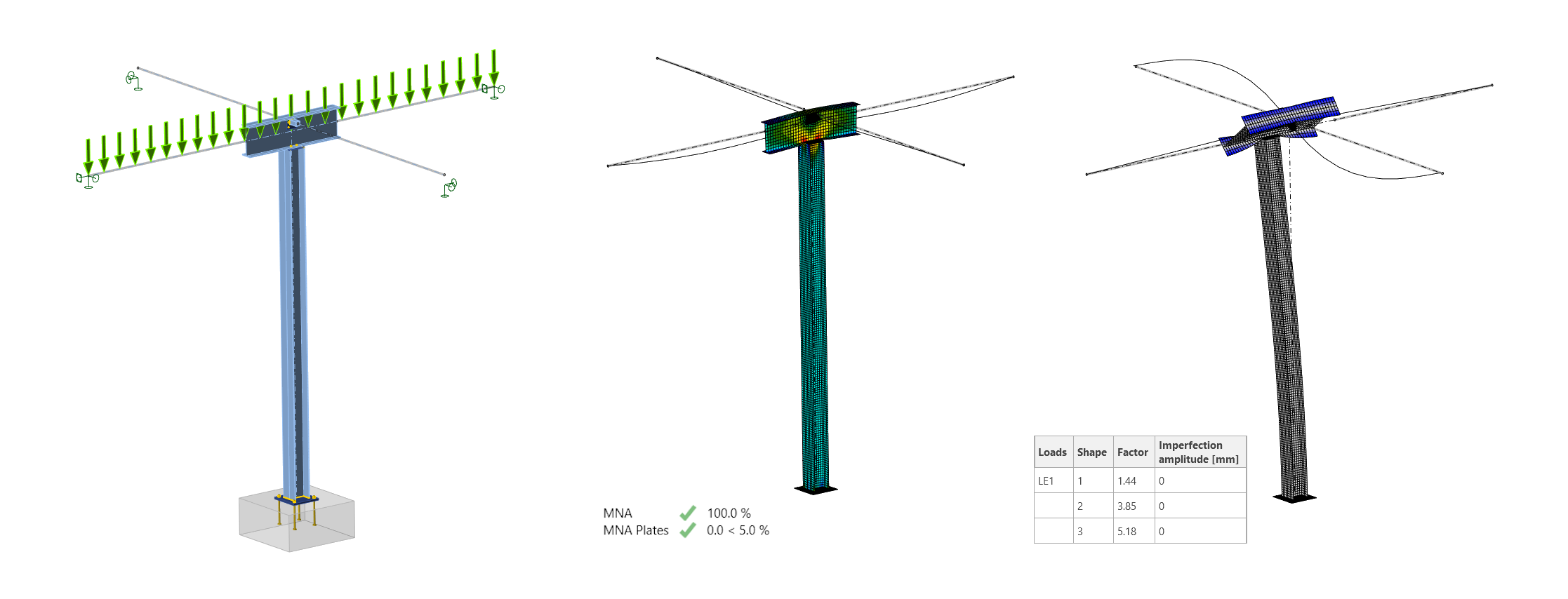-
2023-12-13T10:00:00.0000000Z(în ora dvs. locală, format de 24 de ore)
Data webinarului:
Alăturați-vă webinarului și aflați mai multe despre
- An example of a real structural buckling problem
- Buckling analysis within a global model in FEA software
- Hand calculation of member buckling
- Member buckling analysis using GMNIA calculation
- Possible errors and how to avoid them
Difuzoare

IDEA StatiCa
In this webinar, we will discuss the two present methods for calculations and code-checks of member buckling in steel structures. The analytical approach, as per code equations and procedures, will be compared with the numerical approach in IDEA StatiCa Member, which utilizes CBFEM technology.
Real yet anonymous example
We will take a look at a simple beam-column segment made of a 6-meter-long HEA300 column and an 8-meter-long IPE500 beam lying on top of it. The beam is also stabilized by bracing tubes on both sides. This structural segment is located inside a larger building and serves as a load distributor into the rest of the structural system.
Buckling analysis compared
The global model of this segment is created in the FEA software SCIA Engineer. From here, we will extract the internal forces and also see this program's solution to the buckling analysis.
Then, we shall revise the hand calculation following the analytical approach described in EN 1993-1-1 chapter 6.3, Buckling resistance of members. For that, we will choose the structural system and determine buckling shapes and buckling lengths.
After that, we will do the same job using IDEA Statica Member and its GMNIA solver with imperfections (see how to determine them), compare the results, and discuss the findings and possible design alternatives.
If you like, you can also read a blog on the same topic - Is the analytical approach enough to check member buckling?
If you want to see more of Member in action, there are two other recorded webinars to watch:
Or browse our Support center for tutorials and read the theoretical background.


